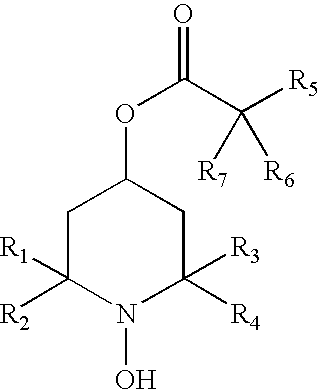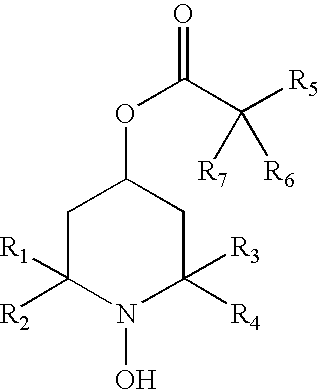Amelioration of vitrectomy-induced cataracts
a vitrectomy and cataract technology, applied in the field of vitrectomy-induced cataracts, can solve the problems of affecting the ability to focus light, visual impairment and blindness, vision loss, etc., and achieve the effect of inhibiting the development of vitrectomy-induced cataracts
- Summary
- Abstract
- Description
- Claims
- Application Information
AI Technical Summary
Benefits of technology
Problems solved by technology
Method used
Image
Examples
example 1
Ocular Tissue, Urine and Plasma Levels of Total Radioactivity in New Zealand White Rabbits Following a Single Intravitreal Dose of Tempol-H
[0095] A randomized, single treatment study, in nine groups of three NZW rabbits per group, was conducted. Animals were assigned to study groups by a computerized randomization program designed to achieve similar body weights per group. Naïve animals received an intra-vitreous injection of the test article at a nominal dose of 2.0 mg*eq [14C]Tempol-H (1,4-dihydroxy-2,2,6,6-tetramethylpiperidine(2,4,6-14C3)). A dose of 0.1 mL, containing 2.18 μCi was administered into both eyes. At nine specified time points post dose (1, 30, 60 minutes, 2, 4, 8, 24, 48, and 120 hours), three animals per group were euthanized and terminal samples were collected. The following tissues were harvested from each eye of all animals: aqueous humor, cornea, iris / ciliary body complex, vitreous humor, lens, retina-choroid plexus and optic nerve. Blood was collected from t...
example 2
Method to Ameliorate Vitrectomy-Induced Cataract Development
[0097] The present invention provides methods to prevent, inhibit, or slow the development of a cataract during or following a surgical replacement of the vitreous gel in a subject such as a mammal, including without limitation rabbits, rats, dogs, cats, or humans. The methods comprise administering a hydroxylamine compound, or hydroxylamine compound in combination with a reducing agent, to a subject in a ophthalmologically compatible carrier, and in an amount effective to prevent, inhibit, or slow the development of vitrectomy-induced cataracts in the crystalline lens of the eye. The methods of the invention are suitable for treatment against vitrectomy-induced nuclear, cortical, or subcapsular cataracts.
[0098] The hydroxylamine compound may be administered to the vitreous cavity before, during, and after the vitrectomy procedure. In this prophetic example, the lens is pre-treated with the hydroxylamine compound by direc...
PUM
| Property | Measurement | Unit |
|---|---|---|
| partition coefficient | aaaaa | aaaaa |
| pKa | aaaaa | aaaaa |
| pKa | aaaaa | aaaaa |
Abstract
Description
Claims
Application Information
 Login to View More
Login to View More - R&D
- Intellectual Property
- Life Sciences
- Materials
- Tech Scout
- Unparalleled Data Quality
- Higher Quality Content
- 60% Fewer Hallucinations
Browse by: Latest US Patents, China's latest patents, Technical Efficacy Thesaurus, Application Domain, Technology Topic, Popular Technical Reports.
© 2025 PatSnap. All rights reserved.Legal|Privacy policy|Modern Slavery Act Transparency Statement|Sitemap|About US| Contact US: help@patsnap.com



